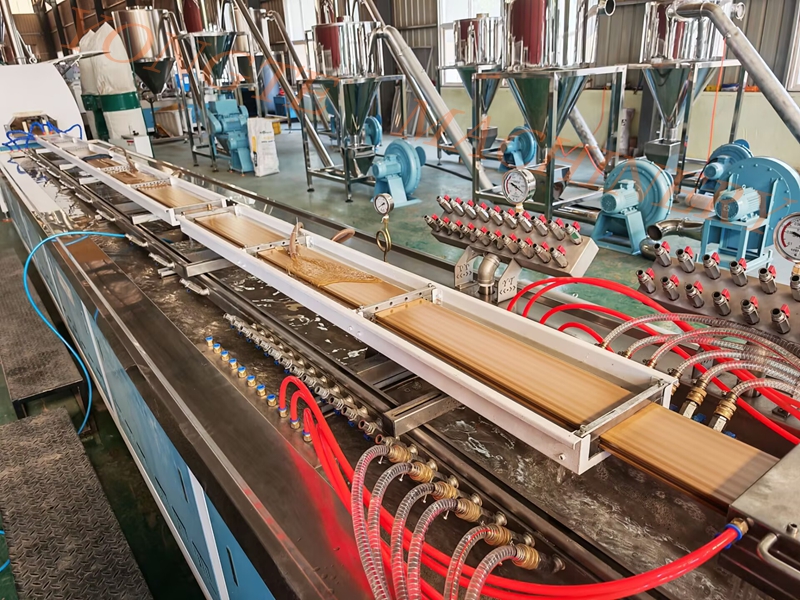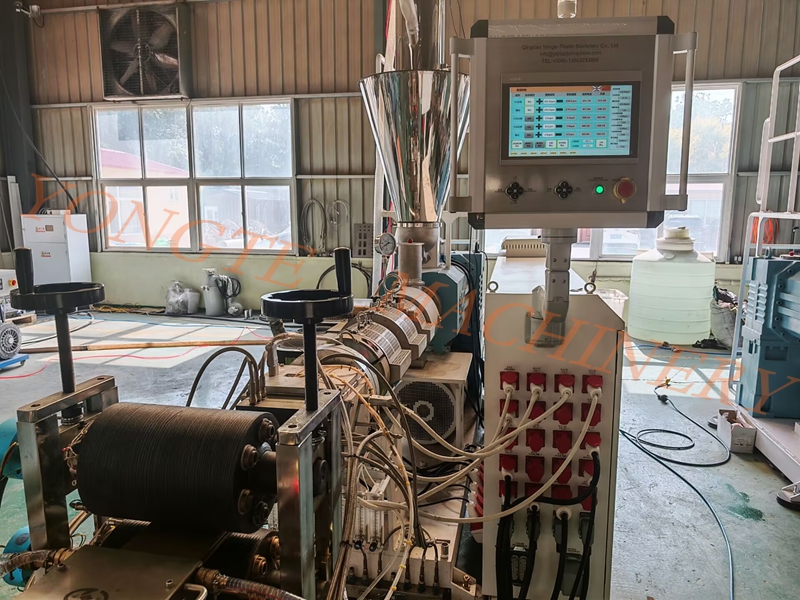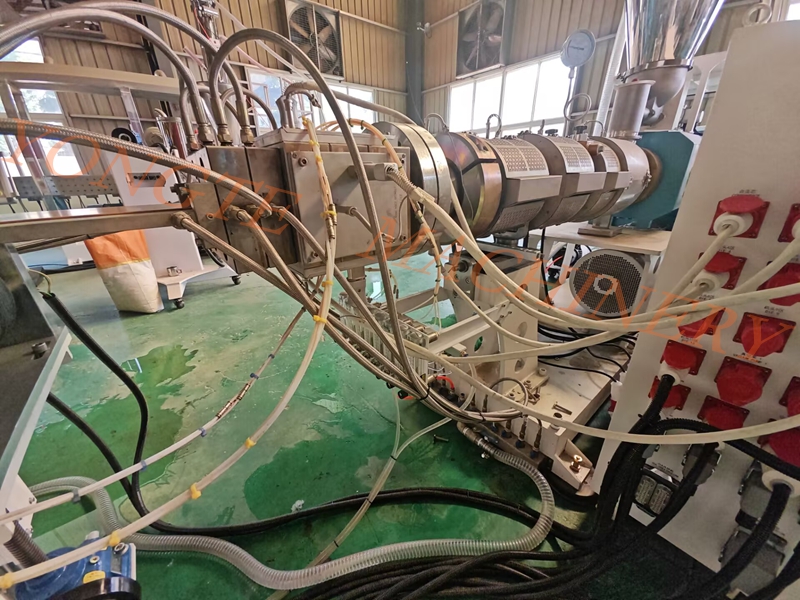Qingdao Sure Plastic Machinery's wood plastic floor production line has successfully completed the trial run
Qingdao Sure Plastic Machinery recently successfully completed the trial run of a new generation of wood plastic floor production line. The wood plastic floor production line that was successfully tested this time is the result of two years of research and development by Sure Plastic Machinery. In view of the industry pain points such as uneven material dispersion and severe equipment wear in traditional wood plastic extrusion, a two-stage co-mixing extrusion system has been innovatively constructed. The front end of the system is equipped with an efficient continuous internal mixer, which can pre-disperse waste plastic particles and wood fiber raw materials to achieve a 92% uniformity in the initial mixing of materials; the rear end of the Φ75/156 parallel twin-screw main machine uses a 48:1 ultra-long-diameter ratio design, combined with a modular building block screw structure, to achieve deep mixing of materials in the melt plasticization stage, and finally achieve a dynamic mixing uniformity of ≥98%, far exceeding the industry average. The screw barrel adopts advanced bimetallic centrifugal casting technology, and a tungsten carbide wear-resistant layer is compounded on the alloy steel matrix. The surface hardness reaches HRC65-70. According to the test of a third-party organization, its wear resistance coefficient is 3 times higher than that of traditional nitrided materials. The designed service life under continuous operation conditions exceeds 8,000 hours, which significantly reduces the operation and maintenance costs of the equipment.

At the test site, the production line showed excellent production performance. The stability test data for 72 consecutive hours showed that the production line can run stably at a speed of 1.8m/min, and the maximum extrusion volume can reach 450kg/h, which can achieve the production of full-size wood-plastic flooring with a width of 100-300mm and a thickness of 5-15mm. During the production process, the intelligent control system collects and analyzes 32 key parameters such as temperature, pressure, and torque in real time, and automatically adjusts the screw speed and heating power through the AI algorithm to ensure the stability of the production process. According to the authoritative test of the National Building Materials Testing Center, the static bending strength of the finished wood plastic floor reaches 48MPa, the elastic modulus is 4500MPa, the wear resistance revolution exceeds 10,000 revolutions, and the waterproof rate is controlled at ≤0.3%. It is superior to the GB/T 24508-2023 national standard in 12 core indicators such as weather resistance and flame retardancy.

Intelligence and greenness have become the core competitiveness of this production line. Its integrated PID temperature control module realizes precise control of the barrel temperature gradient through distributed sensors, with a control accuracy of ±1℃; the closed-loop feedback system composed of the online thickness gauge and the laser calibration device can strictly control the thickness error of the board within ±0.05mm, ensuring the high-precision molding of the product. The negative pressure dust removal system adopts a three-stage filtration design, combined with cyclone separation and bag dust removal technology, so that the dust concentration in the workshop is stably lower than 5mg/m³, meeting the requirements of the industrial clean workshop of ISO 14644-1 standard. In addition, the equipment has strong material compatibility, supports mainstream plastic base materials such as PE, PP, and PVC, can adapt to 30%-60% of wood fiber addition, and is compatible with agricultural waste such as bamboo fiber and rice husk powder, providing a technical solution for resource recycling.

Industry experts pointed out that the successful trial of the production line is of far-reaching significance. On the one hand, its precision extrusion control, material compatibility and intelligence level have reached the international advanced level, which is expected to promote the overall technical level of the domestic wood-plastic equipment industry; on the other hand, compared with traditional wood-plastic production lines, the equipment can increase production efficiency by more than 20% and reduce energy consumption by 15%. It is expected to help the industry reduce more than 300,000 tons of plastic waste emissions each year. With the continuous expansion of the application of wood-plastic composite materials in architectural decoration, outdoor facilities and other fields, this production line will accelerate the industry's move towards high-end and green directions, and contribute equipment manufacturing to the realization of the "dual carbon" goal.